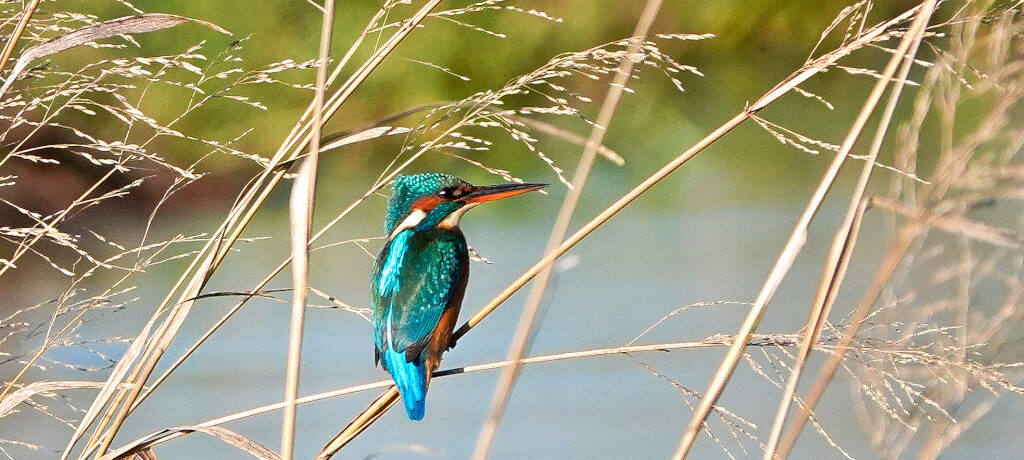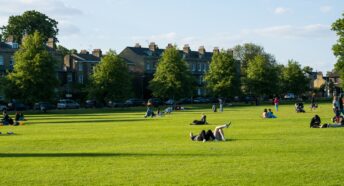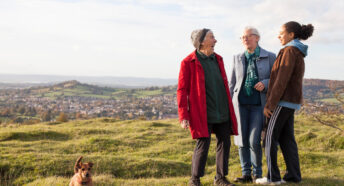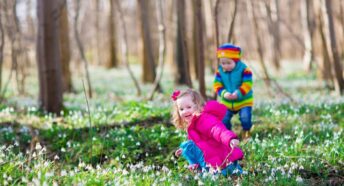Read an extract from Call of the Kingfisher
While the summer might be close to bowing out, the robin’s song returns this month, and will be with us until summer next year.
Connecting with the rhythms of wildlife is a big part of Nick Penny’s new book, Call of the Kingfisher. Nick, a writer, composer and wildlife recordist, describes the book as ‘a love letter to a small section of the River Nene‘ in Northamptonshire.
The chapters are broken down into months as Nick invites us to join him along the river, taking in the full sensory experience that is our natural world – in particular the sounds. From the glimpses of kingfishers in a frosty January to the sweet-scented honeysuckle and nightingale song in early June, the book beautifully illustrates the joy of observing nature with patience.
Complete with a suite of high-quality wildlife audio recordings, Call of the Kingfisher is a glorious homage to wildlife.
Here, we invite you to enjoy a short extract from August.
16 August
This morning I drive to Thrapston to walk the final section downriver to Oundle. It’s around here that the pronunciation of the River Nene changes, even though the spelling stays the same. Upriver it’s pronounced ‘Nen’. Downstream it’s ‘Neen’. I’ve not come across a good explanation why, but it’s very important to the people on either side of the division. Perhaps it marks a tribal border from a long time ago.
On the riverside, there is an information board about a local man, Sir John Washington. He was the great-great-grandfather of George Washington, the first President of the United States. Many pilgrims set out from the Nene valley to America. They included the ancestors of the Presidents John Adams and John Quincy Adams, and of the inventor and statesman Benjamin Franklin.
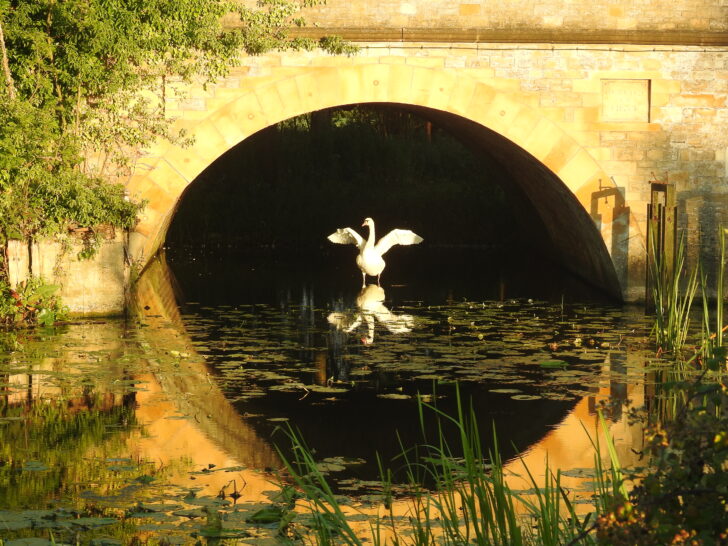
The path passes by the beautiful old watermill and then reaches a series of flooded gravel pits that have been turned into Titchmarsh nature reserve. At one of the bird hides I stop to watch some cormorants and the slow flight of a great egret. On the far side of the lake is an old duck decoy that was originally constructed by the fourth Lord Lilford in 1885. It’s now a heronry, home to a large number of breeding grey herons in the nesting season in February each year.
I walk on to Wadenhoe. The church there is elevated on a small escarpment in an idyllic setting, but I am sad to see a number of prohibitive signs by the river. The growth of wild swimming, paddleboarding and canoeing has resulted in a lot of the traditional access points along the river being shut off. The river is free for all to use, but there are few places left locally where you can dive into it or launch a craft.
As the path crosses the fields towards Stoke Doyle, the elegant profile of Lilford Hall is across the river to the right. A mile or so later I am back on home territory, sitting on the jetty at Barnwell lock, cooling my feet in the water. As a narrowboat goes by I notice a small brass sculpture of a kingfisher perched on the swan-necked tiller arm that reaches out behind the steerer. It peers down into the boat’s wake.
I walk on down the river to Ashton. A brief flash of blue back feathers disappears into the trees opposite the lock. I stop and wait. A brown hawker dragonfly flies through some burdock heads with a dry crackle of dusty wings. Wood pigeons coo. There’s a creaky yaffle from a green woodpecker upstream.
A light wind blows a scatter of white clouds across the sky. Sunlight bounces off the river, sending ripples of light along the lichened branches of an ash tree on the far bank. Back at the bridge in Oundle a tiny patch of blue is showing through the leaves of a tree by the boathouse. The kingfisher takes off as I pass, flying off across the meadows towards the trees downriver.
20 August
It’s raining hard this morning. There’s a sweet scent in the air that rises from the earth when rain comes after a dry spell. It even has its own name: petrichor. It’s partly caused by plant oils that become absorbed in the soil and released when the rain disturbs it.
I sit under an overhanging ash tree. Raindrops send circular ripples across the water. Larger drips from the tree’s leaves spawn half-bubbles which briefly pop up like space-helmeted frogs then, just as suddenly, disappear. I watch them for a while then set off home through the gentle patter of trees dripping onto the forest floor.
The sun comes out in the afternoon, and I head back to the meadows. Now the scent is even more heady. I stop to sniff at some of the leaves and flowers along the way. Bindweed has no smell at all. Nor does purple loosestrife, which is surprising given the beauty of its flowers. Mint is predictably calming, and when I rub the leaves on my forehead it feels cool.
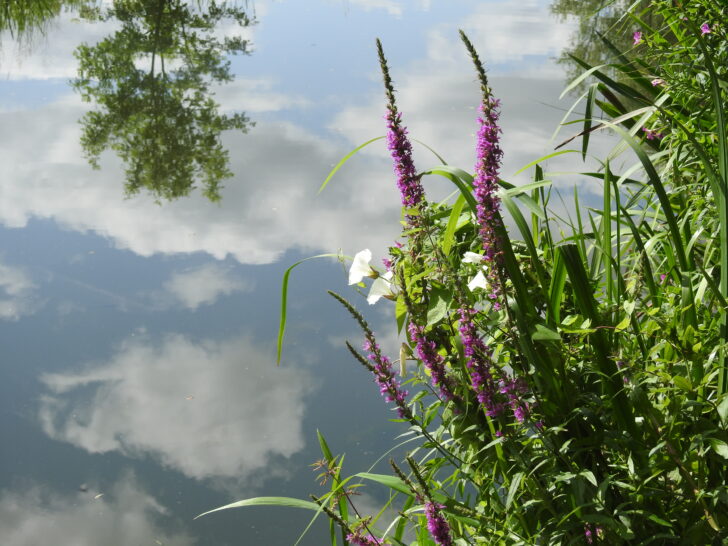
I stop at a tall patch of Himalayan balsam. The flowers are pink and swarming with bees, but as an alien species the plant isn’t always popular with naturalists. I can’t smell the flower, but when I crush some petals between finger and thumb there’s a hint of peach. Nettles smell dark green and bitter. A blue thistle head comes close to having a scent like a garden flower. Most aromatic are the yellow flowers of common ragwort.
When I reach the woods, I head for a gap in the trees to get a view up and down the river. A full canopy of summer leaves can make a wood a dark and gloomy place, and I’m attracted to the light of the sky and its reflection in the water. Cuckoo-pint, also known as lords-and-ladies, is dotted along the path. Its red berries are like little waymarkers. Back in the meadows the gate slams behind me with a loud, punctuating click. I notice an orange and light brown shape settled on a fence rail. Appropriately, it’s a gatekeeper butterfly.
25 August
At lunchtime I take a sandwich to Lower Barnwell lock, hoping to sit and relax as the river flows by. But as I arrive two kingfishers put on a virtuoso display of flying. They come within a few yards of each other by the lock, then separate and make wide, wheeling turns through the trees and back again in overlapping circles. It’s a blur of unexpected changes of direction with orange underbodies alternating with the blue of their upperwings.
Then one lands high in a tree and waits with head cocked. It gives me a chance to take my camera out until the other arrives, calling loudly, and there are more explosive looping flights followed by perching further down the bank. This happens repeatedly for nearly an hour before they both fly off upstream.
It looks like a courtship display, but when I get home the photos show that both the birds were males. They could have been young birds having a dispute over territory. The whole thing was so captivating that I realise I forgot to eat the sandwich.
28 August
Robins have started to sing again, and they won’t stop till next summer. Even on the harshest winter day you’re likely to hear that silvery voice. And other birds have begun to break their late-summer silence, including chiffchaffs and dunnocks. A pair of buzzards wheel and call high overhead as I get to the wood. It reminds me of a recording I made here a couple of months ago. (Listen to the August buzzard song here).
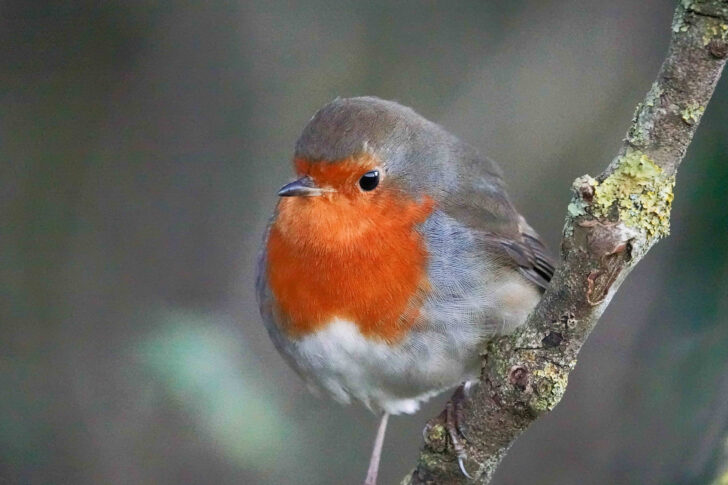
I cut down towards the river, along a path that’s overgrown with nettles and brambles. As it gets closer to the water it’s wetter underfoot but easier to get through. Just as I get to the river a kingfisher leaves an invisible perch in the overhanging willows. One of its calls is only ten feet away as it passes, and I hear a couple in a canoe downstream call out in surprise as it flies right by them.
31 August
There’s a real sense that summer is ending. I get out my copy of The Wind in the Willows, a book I come back to again and again. In among the well-known characters and their enjoyable adventures are some breathtaking insights into nature, and there’s a magical sense of place and time. In the chapter ‘Wayfarers All’, it’s late summer and Ratty is restless: ‘There’s an air of change and departure. Birds are feeling the call of the South’. He meets three swallows who are making plans for their journey. Ratty asks why they have to go – isn’t their home here good enough for them? They talk of ‘a sweet unrest’ and describe how ‘one by one the scents and sounds and names of long-forgotten places come gradually back and beckon to us’. Ratty asks why, if those places are so good, will they bother coming back next year?
They answer that in due course the season will call them back to lush meadows, the cuckoo’s call, and ‘quiet waterlilies swaying on the surface of an English stream. But to-day all that seems pale and thin and very far away. Just now our blood dances to other music.’
Such an eloquent evocation of the dreams of autumn and the dreams of spring. And such wonderful words to read at the cusp of the seasons, when summer starts to tip over into autumn with all the changes, mysteries and uncertainties that will bring.
About the author
Nick Penny is a writer, composer and wildlife recordist. This extract is from his debut book Call of the Kingfisher, released in July 2023.
